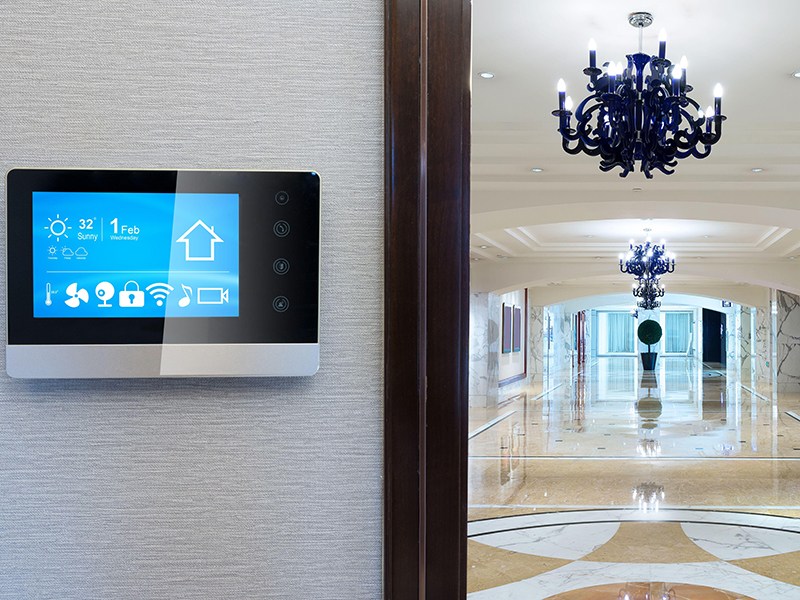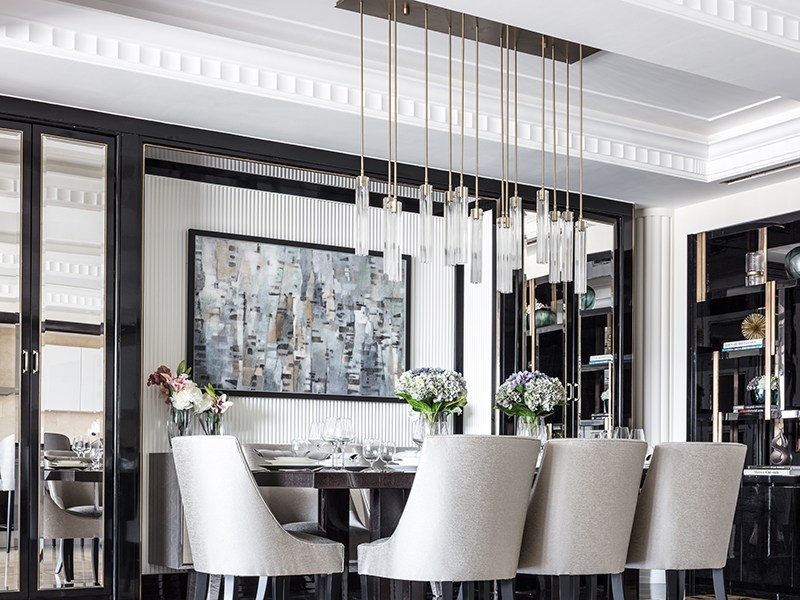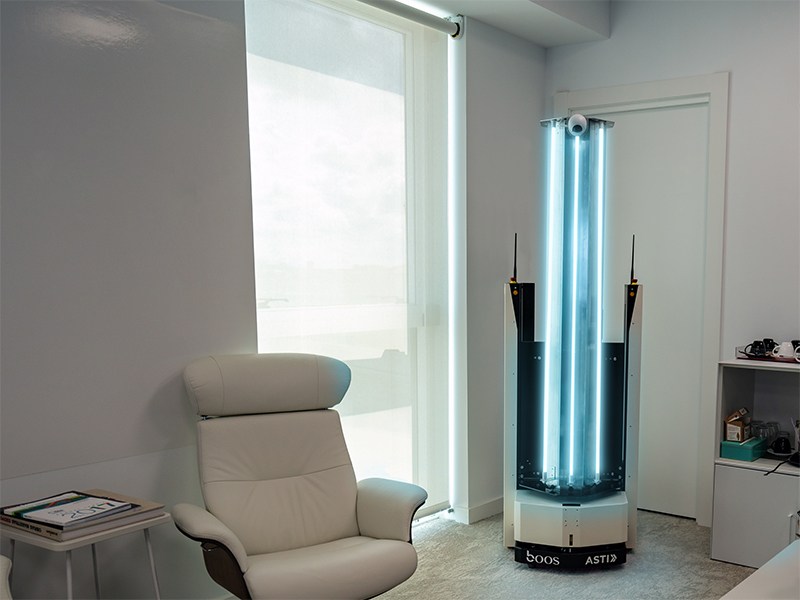In the face of COVID-19, experts are predicting a turn to technology to help keep us healthy—these are the future innovations they believe every homeowner should consider
Smart home technology started life as a way to upgrade the running of your household, with the Internet of Things telling one device how to operate another—no human contact required. But in an age when technology can reduce the need to touch surfaces, and therefore the risk of infection, contactless living has become de rigueur rather than merely desirable. Now, a smart house is also a healthier one, evolving to keep you safe and well within your own four walls.
“Appliances already exist that could save their owners a trip to hospital,” says futurist David Shrier, lecturer in technology and innovation at MIT’s Media Lab and Associate Fellow at the Saïd Business School at the University of Oxford. He sees intelligent devices as potential life-savers.
According to Shrier, the home of the future will not only be equipped with touch-free capabilities such as voice-activated entry, heating, and lighting systems, remotely operated cooking appliances, contactless faucets, and closets that sterilize the clothes within—but also the next generation of innovative health technology. This will include UV disinfection lights, which sanitize surfaces within seconds, sensors that can identify if any occupants are running a fever, and a range of diagnostic tech that once used to be the preserve of hospital tests.

2C194C2 smart screen with smart home with modern corridor.
Current smart home technology offers health-saving, touch-free options, such as devices that can be operated remotely. Future offerings will take the health focus further by relaying data to healthcare providers.
“The move is towards home technology that can collect medical data and share it with your doctors,” he explains. He’s referring to temperature-taking sensors, as well as toilets that can analyze their contents, facilitating potentially life-saving early interventions, and bedroom mirrors that can judge respiration and blood flow by analyzing your face color and other visible alarm signals. “We’re talking about symptoms you used to have to go to the doctor to be tested for.”
‘As we spend more time at home than ever before, we’ll see increasing interest in sensors and sterilization devices’—David Shrier.
While intelligent mirrors are a year or two away from launch, smart toilets already exist—“they are in use in Kaiser Permanente hospitals across California”, says Shrier. Versions that can immediately kill harmful pathogens have also been backed for mass rollout by big-name investors such as Bill Gates.

Image: Gates Archive
In 2018—along with global innovators, development banks, and corporate partners—the Bill & Melinda Gates Foundation hosted the first Reinvented Toilet Expo, which showcased smart toilet technologies.
Another futuristic technology that has already arrived is the patented Lema Air Cleaning System from Italy, which sanitizes clothing and footwear. The system has been installed in closets for clients by pioneering interior design firm Elicyon, whose founder Charu Gandhi says: “It minimizes the threat of viruses, while also cleansing garments of odors, bacteria, and air pollution.”
Helen Westlake, creative director of U.K.-based design studio, Millier, has embraced health-focused technology too. She’s a particular fan of Gaggenau’s handle-free refrigerators. “There’s an increased demand for hands-free automation,” she says. “That means fewer door pulls and inherently anti-bacterial surfaces like stainless steel and copper.”

Jonathan Cropper, a luxury marketing expert who has worked for brands such as Aston Martin, has taken it one step further: not only applying technology to certain rooms of a home, but to entire houses. Along with leading telemedical concierge service WorldClinic, and award-winning Zaha Hadid Architects, his company, Futurlogic, has created 20 new future-proofed homes. Such smart houses will offer inhabitants state-of-the-art air and water filtration systems and antibacterial light disinfection, as well as emergency life support available in any location—no matter how remote.
“These 1,700-square-foot (158 sq m) homes are designed to be mobile—to be dropped wherever their owners might want to retreat for months at a time,” Cropper explains. “And, if you need medical assistance, WorldClinic will come and get you.”

Air-filtration systems, such as this one concealed in the ceiling of a dining room by Elicyon designs, can minimize the threat of viruses, while also ridding the air of pollution, and are set to become standard in a “future-proofed” home.
Ian Silverstein, a home technology adviser based in the United Kingdom, is following a similar path with the new home he plans to build. While he installed £75,000 ($96,900) worth of smart technology into his existing home several years ago, he plans to incorporate health-focused capabilities, such as temperature-taking thermal sensors, right from the planning stages of this build.
In the meantime, he has bought the portable, inexpensive personal home sanitizer unit he says should be in every home. “I drop my phone and keys into it as soon as I walk in, and it uses UV light to remove 99.9 percent of all microbes.” He also notes that the unit has the added benefit of bringing sounder sleep to those who leave their phones in them overnight, keeping disruptive blue light at bay. However, he’s less keen on bringing home tech into the bathroom: “I see it as such a private space.”

Image: ASTI Mobile Robotics
While smaller UV-disinfecting devices are available for everyday items, the ZenZoe robot can autonomously treat an entire room within 15 minutes using UV light that kills 99.9 percent of bacteria.
Which begs the question: going contactless in the home and adding disinfecting technologies seems like a no-brainer, but do we really want toilets and mirrors with analytic capabilities that they can share with our physicians?
Shrier believes a pandemic, which might be followed by others in the future, has made a digital doctor in the house an attractive, rather than intrusive, proposition: “As we spend more time at home than ever before, we’ll see increasing interest in sensors and sterilization devices.
“We’ll also see the introduction of intelligent tools that are aware of our medical profiles and needs, and are able to monitor our health continually. And, as with all innovations, we will see them first at the luxury end of the market.”


